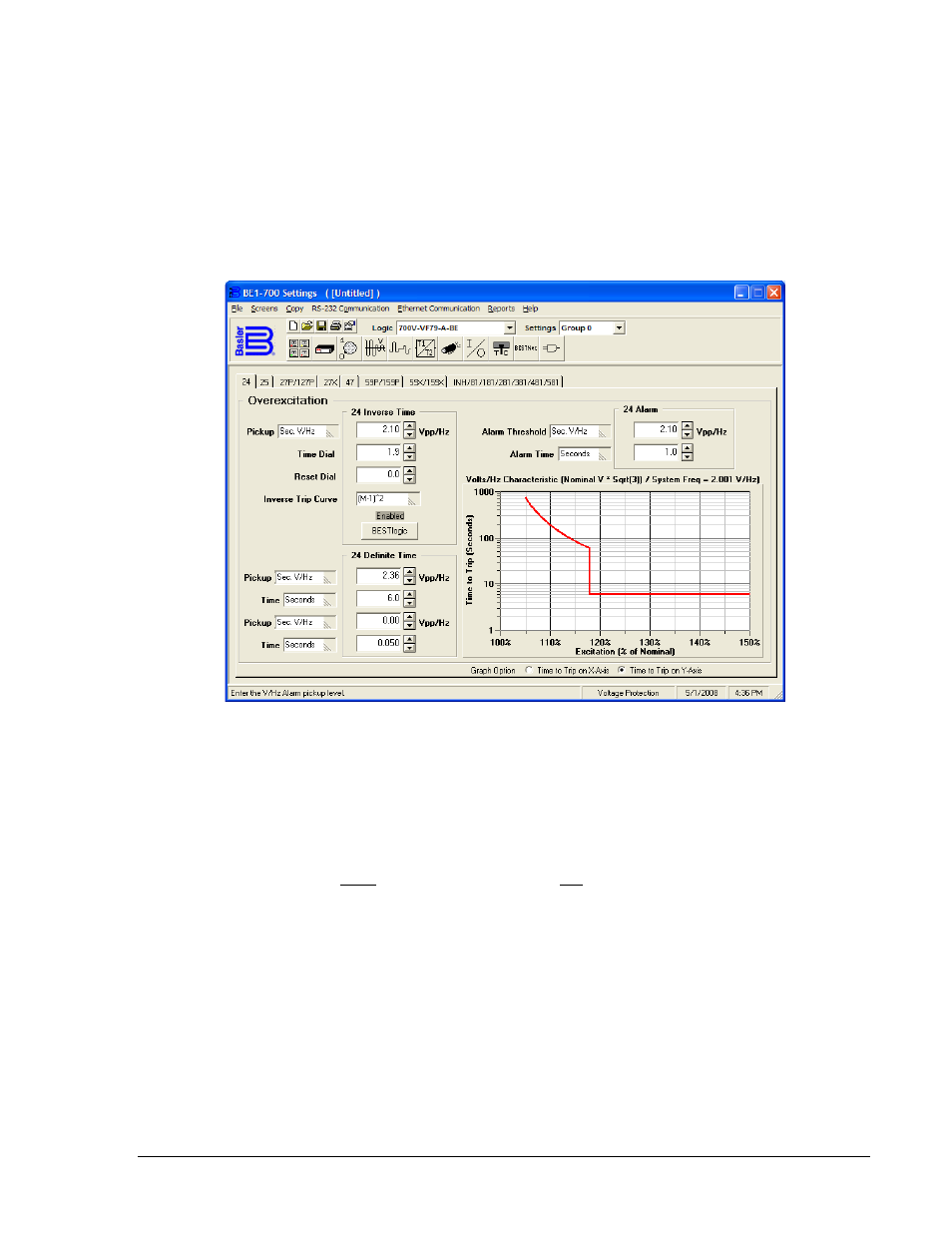Equation 4-7. time to reset -25 – Basler Electric BE1-700 User Manual
Page 81

Assuming a Vnom of 69.3 volts phase-neutral, 1 pu volts/hertz = (69.3 *
√3) / 60 = 2.00. Using
IEEE/C37.102, "Guide for AC Generator Protection" as a guide for setting overexcitation protection, the
following example demonstrates how to set the BE1-700 to provide a composite V/Hz characteristic for
protection of a generator and a step-up transformer:
• Alarm = 105% @ 1 second time delay; V/Hz = 2 * 1.05 = 2.10
• Inverse time pickup = 105%; Time Dial = 1.9; Inverse Trip Curve = (M-1)^2; V/Hz = 2 * 1.05 = 2.10
• Definite Time #1 = 118% @ 6 seconds time delay; V/Hz = 1.18 * 2.0 = 2.36
In BESTCOMS, the 24 graphing capability can be used to verify the composite shape as shown in Figure
4-20. Secondary V/Hz is shown.
Figure 4-20. Voltage Protection Screen, Overexcitation (24) Tab
The reset rate is determined by the reset dial setting. A setting of 0.0 enables reset to be instantaneous.
Using the inverse squared characteristic, assume a trip time dial setting 2.0 and a pickup multiple of 1.2.
The total time to trip will be 50 seconds. If this exists for 30 seconds before being corrected (60% elapsed
time), what would the total reset time be for a reset dial setting of 5? Based on the reset equation
(Equation 4-7), the calculation will be:
seconds
300
100
50
30
0
.
5
T
100
FST
E
D
T
R
T
R
R
=
∗
∗
=
∗
∗
=
Equation 4-7. Time to Reset
If the overexcitation condition returns prior to total reset (i.e., less than 300 seconds), timing resumes from
that point at the inverse square rate. For example, if this condition recurs after 150 seconds or 50% of the
total reset time, then trip time from the second event will start at 30% instead of 0%, therefore tripping in
70% or the original trip time or 35 seconds. Figure 4-21 illustrates the inverse time delay and reset time.
9376700990 Rev M
BE1-700 Protection and Control
4-25